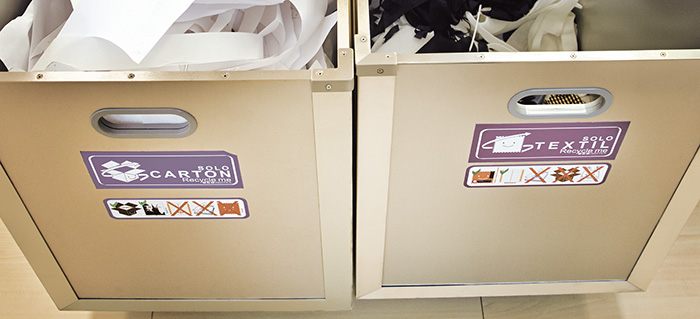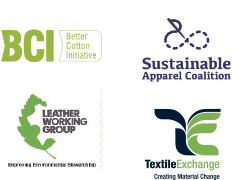Protection of biodiversity

Objective
To protect, conserve and develop the wealth of species and diversity by means of promoting the consumption of sustainable raw materials and the implementation of conservation projects in local communities
Opportunity
To achieve a more efficient management of natural resources and a more adequate protection of the environment and ecosystems
Material issuess
6. Green Design
10. Volatility of raw material prices
28. Waste production and recycling
30. Dialogue with and commitment to the stakeholders
In 2013, Inditex published its Biodiversity Strategy, which strengthens and complements the Water and Energy Strategies and also forms part of the Group’s Sustainability Strategy. This strategy establishes the directives for protecting, preserving and developing the biodiversity potentially affected by its business processes and, above all, by the raw materials it uses in production.
Inditex has defined its targets following the principles established in the United Nations Convention on Biological Diversity and recognising the work of the International Union for Conservation of Nature (IUCN). To guarantee the application of this strategy, its principles have been integrated into the master plans of each of the key areas of Inditex’s business model. A system of indicators has also been established.
Further information at http://www.inditex.com/en/sustainability/environment/biodiversity
This section contains details of the actions carried out by Inditex to raise awareness about the importance of biodiversity and reducing direct pressure on the diversity of natural life and ecosystems. The following graph sets out initiatives designed to ensure the efficient use of resources from the sustainable production and management of raw materials and forests to the use and end of life of the product.
Principal initiatives developed under the Biodiversity Strategy in 2013
| BIODIVERSITY STRATEGY |
Raw materials |
|
|
| Manufacturing |
|
||
| Logistics |
|
||
| Stores and head offices |
|
||
| Product, use and end of life |
|
||

Initiatives Inditex collaborates with

Use of more sustainable fibres
Cotton is the principal raw material used by Inditex and is therefore one of the main priorities in moving forward in the sustainability of its business model. The use of organic cotton allows Inditex to reduce the environmental, social and economic impacts of conventional cotton, in particular in the cultivation phase.
In line with its participation in international initiatives such as the Textile Exchange and Better Cotton Initiative, Zara has launched collections based on ecologically grown cotton under the OE 100 and OE Blended (now called the OCS, Organic Content Standard) standards. Moreover, implementation of the Better Cotton Initiative has also begun in Zara’s collections.
Inditex also collaborates through the Farm Investment Programme with agricultural projects for training in sustainable techniques and the development of seeds suitable for ecological farming.
Finally, in 2013, Inditex promoted raw material training not only for key suppliers in Spain, Portugal, Turkey, Bangladesh, India and China but also the Zara, Oysho, Pull&Bear and Tempe purchasing teams and the purchasing and production staff in their local offices in Spain, Portugal, Turkey, Bangladesh, India and China.
Participants receive training on the raw materials most commonly used by Inditex, their environmental, social and economic impacts and risks, as well as the programmes to increase the use of more sustainable fibres currently being implemented by the company. These training sessions aim not only to inform participants but also to encourage them to follow and contribute to such programmes.
As a result, this year Inditex placed more than 3.5 million 100% certified ecological cotton garments on the market, and also started 5% and 50% ecological cotton programmes.
Forest products management
Inditex has carried out emission compensation projects by repopulating forests and has promoted the sustainable use of resources by requiring that all paper bags, labels and furniture used in its business model have the PEFC/FSC certification that guarantees sustainable forest management. These certifications guarantee that the entire forest management process is carried out in a controlled and sustainable manner.
Ecolabel for footwear
Since 2013, Inditex has taken part in the review process of the Ecolabel for footwear led by the European Commission. The aim of this review is to adapt the criteria for assessing the Ecolabel to the reality of the footwear value chain and to adapt the process of obtaining the Ecolabel to the business model of the fashion industry.
Higg Index
As active members and supporters of the Sustainable Apparel Coalition (SAC), Inditex has collaborated in preparing indicators for assessing footwear sustainability. These indicators were included in the new version of the index developed by the SAC, the Higg Index 2.0. This sustainability index allows the environmental and social impact of all stages of the textile production process to be assessed and to identify opportunities for improvement, which will help the end consumer take decisions on sustainable purchases. In 2014, the SAC will form part of a working group to develop indicators that assess the environmental impact of stores, to be included in a future version of the Higg Index. Inditex will put all of its knowledge into building eco-efficient stores available to the SAC for preparing said indicators.
Use and end of life of the product
Inditex believes that the best way to reuse a garment or textile waste is that which modifies the product as little as possible.
The reuse of the garment as it was produced is therefore the preferred option, followed by the reuse of sub-products deriving from discarded garments and recycling to obtaining products of the same or greater value. The disposal unit must be the last option, preceded by incineration (for energy production).
In 2013 the Group maintained its support for the Roba Amiga co-operative with a contribution of 100,000 euros as set out in the collaboration agreement 2011-2014. In addition to this funding, in 2013 Oysho and Tempe donated more than 90,000 garments and 116 tonnes of footwear, respectively, thus enabling the creation of more jobs.
Also in 2013, Tempe, in collaboration with A Puntadas, reused leather waste from the cutting rooms and samples of products to make 1,330 computer mouse mats. These mouse mats were sold in charity markets held in Tempe.
All of these actions enabled both the social and labour insertion of people in a situation or at risk of social exclusion.
